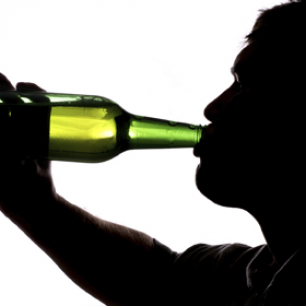Nearly two in every five emergency department (ED) patients in rural areas of Australia drink alcohol at risky levels, a new study has found.
Published in the latest issue of Emergency Medicine Australasia, the journal of the Australasian College for Emergency Medicine, the study investigates for the first time excessive drinking in this population.
The findings indicate a need for alcohol interventions in such a setting.
Lead researcher Dr Alys Havard, from the School of Medicine at the University of Western Sydney, said the study provides evidence that risky drinking among patients of rural Australian EDs is prevalent and is over-represented relative to the general community.
With colleagues from the National Drug and Alcohol Research Centre at the University of New South Wales and the Drug Health Service at Royal Prince Alfred Hospital, she examined information from 1,056 patients presenting to five EDs in rural areas of New South Wales and an additional 756 residents of the same five communities.
They found that ED patients were more likely to engage in risky alcohol consumption than were people in the general community.
They also found that alcohol consumption posed a high risk of both short-term harm and long-term harm, more so than in the general community.
“That 46% of patients had experienced at least one negative consequence from their drinking in the last year is of particular concern, especially as this is almost double the rate experienced by the general community (25%).
“Being under 40 years of age, being single, not completing school, and being a less urgent case were all linked with risky alcohol use,” said Dr Havard.
“But risky drinking was far too common across all patient subgroups. This is why we recommend that all emergency patients are offered screening for alcohol problems. Then brief advice about their drinking can be offered to those that need it”.
“In an earlier study, we found that this advice can be sent to patients in the mail, at a cost of less than $6 per patient. Patients who attended the emergency department for an alcohol-related reason reduced their drinking by 12 drinks per week after receiving this letter.”
“Intervention programs need to be offered to patients who have single-occasions of heavy drinking, which present a risk of injury and other problems. They also need to be for those who drink more than is good for them on a regular basis,” she said.
FURTHER INFORMATION
To interview Dr Alys Havard or Associate Professor Anthony Shakeshaft from the National Drug and Alcohol Research Centre, please contact Marion Downey (NDARC), phone 0401 713 850 or 9385 0333
ACEM President, Dr Sally McCarthy, phone 0410 600 302
Australasian College for Emergency Medicine, phone 03 9320 0444
Issued for the Australasian College for Emergency Medicine by Marilyn Bitomsky, phone 07 3371 3057 or 0412 884 114.



